|
A variety of forest management regulations direct the forest service to maintain and restore old forest conditions as well as to reduce the risks of large
and severe fire events. These goals are potentially competing and require a balanced, landscape approach to accomplish the various desired outcomes. Management
activities take place on a Sierra Nevada landscape that has seen significant fire suppression which has driven the buildup of fire fuel loads (i.e. shrubs, brush,
small trees, and forest floor litter). Mechanical silvicultural activities have the potential to alleviate some of the fire risk, with notable effects on wildlife
species in other parts of the country, but the effects on wildlife in the Sierra Nevada are largely unknown.
|
|
These projects were designed to sample the avian communities in forests prior to and following fuels-reduction treatments in
order to detect the response to changes in vegetation structure and composition. Survey locations were placed in treated
and untreated stands.
Treatments include Defensible Fuel Profile
Zones (DFPZ, which entails manual removal of understory vegetation and dead plant matter, typically near roads),
group-selection timber harvesting, mastication of shrubs, and prescribed burning.
|
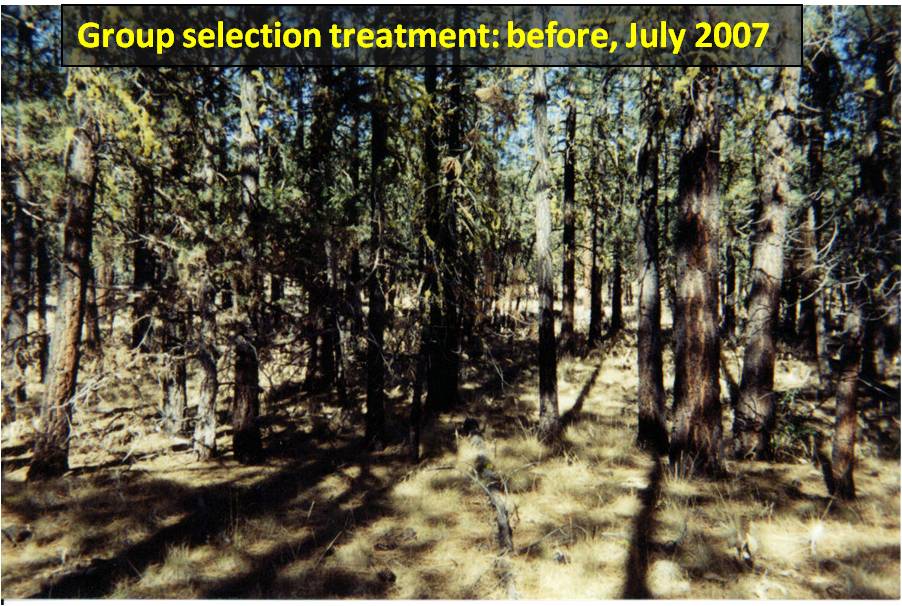
|
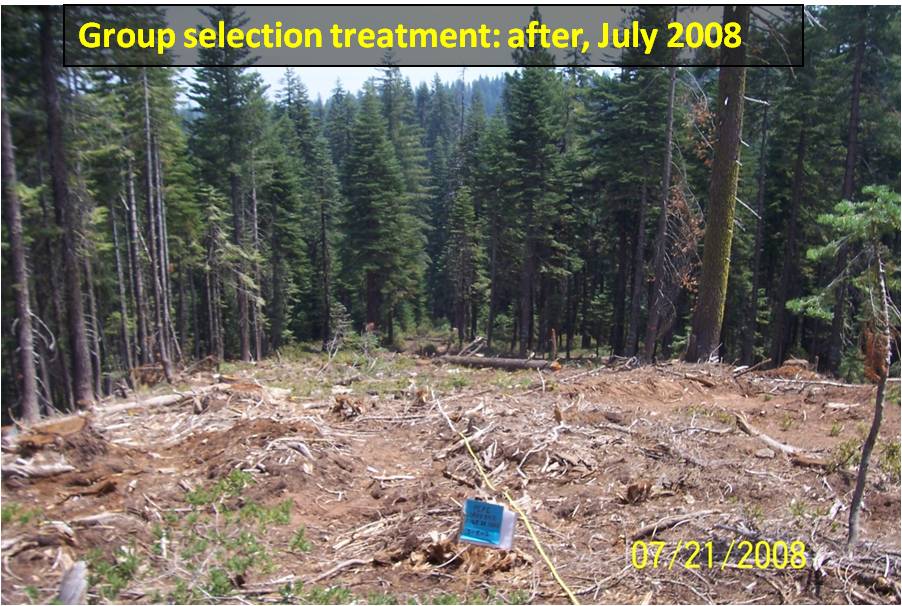
|
|
Before and after group selection harvest treatments: typically a 0.5 to 2.0 acre area of trees are completely removed to create
gaps to encourage shade intolerant tree regeneration and create uneven aged forest stands.
|
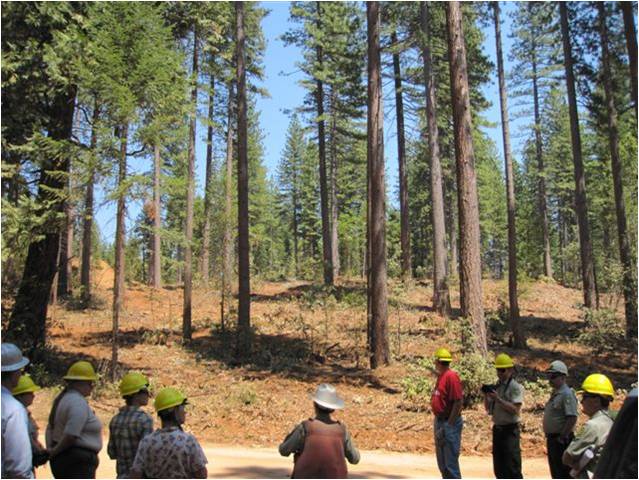
|

|
|
Post-treatment Defensible Fuel Profile Zones: These shaded fuel breaks - usually tied to a road network - are intended to reduce
fire intensity and spread. The prescriptions we studied generally resulted in a substantial reduction in under and middle story
tree and shrub cover as well as a moderate reduction in canopy cover.
|
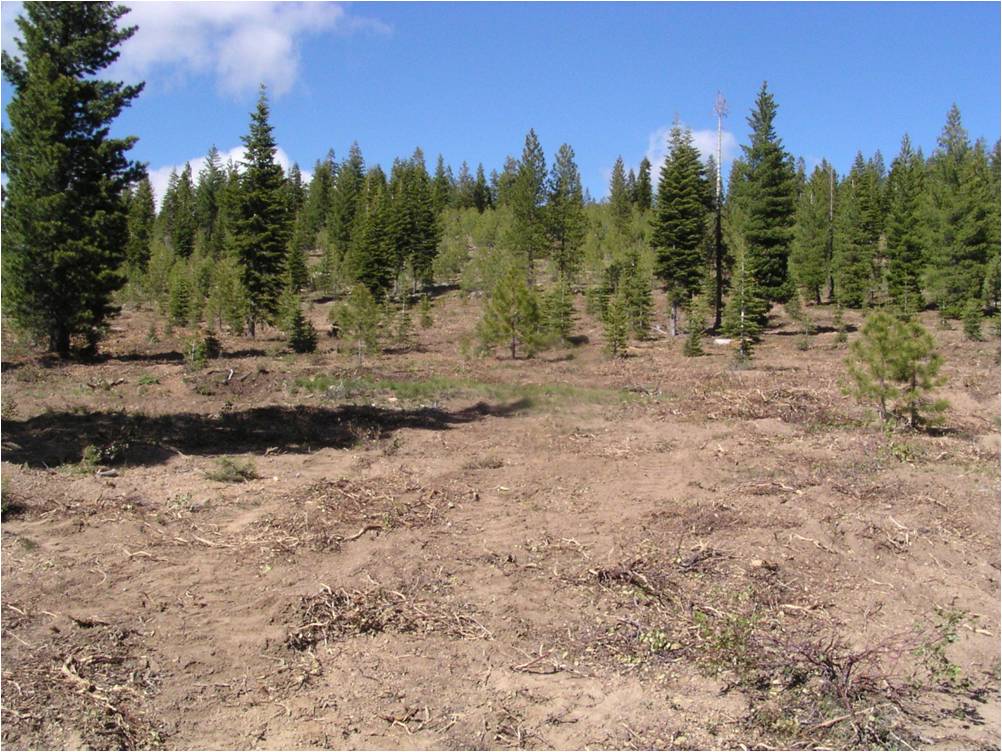
|
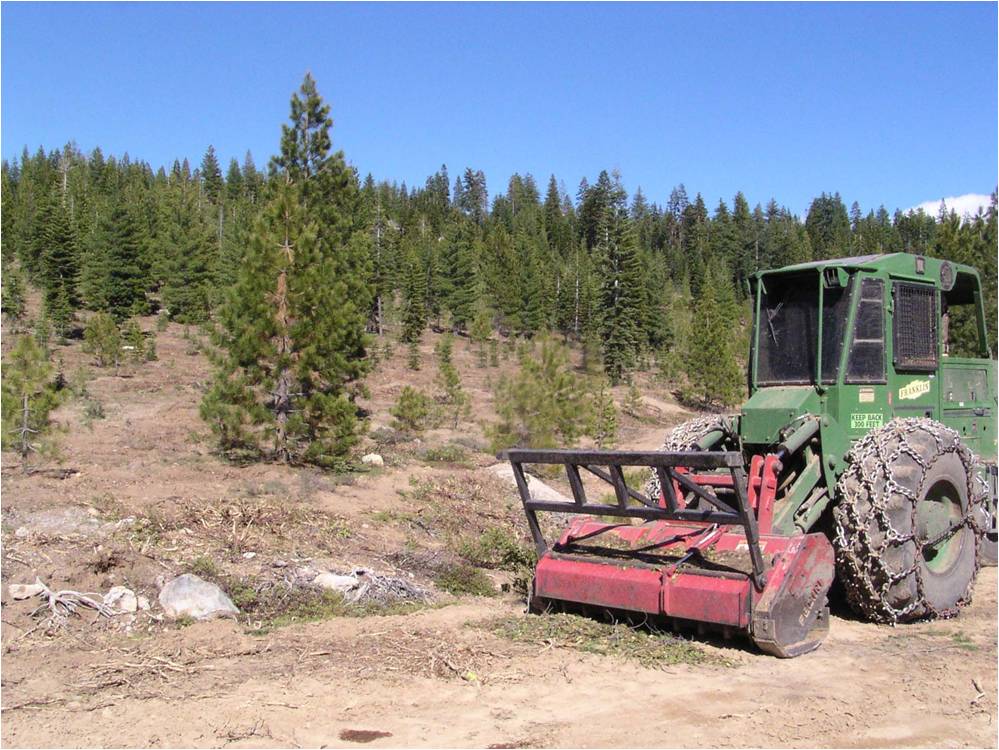
|
|
Post-treatment Mechanical Mastication: This treatment is used to remove understory shrub cover and non-commercial sized timber usually
from plantations by shredding vegetation with a machine similar to the one shown here. This results in a significant reduction in
shrub cover and overall understory foliage volume but may increase surface fuels.
|
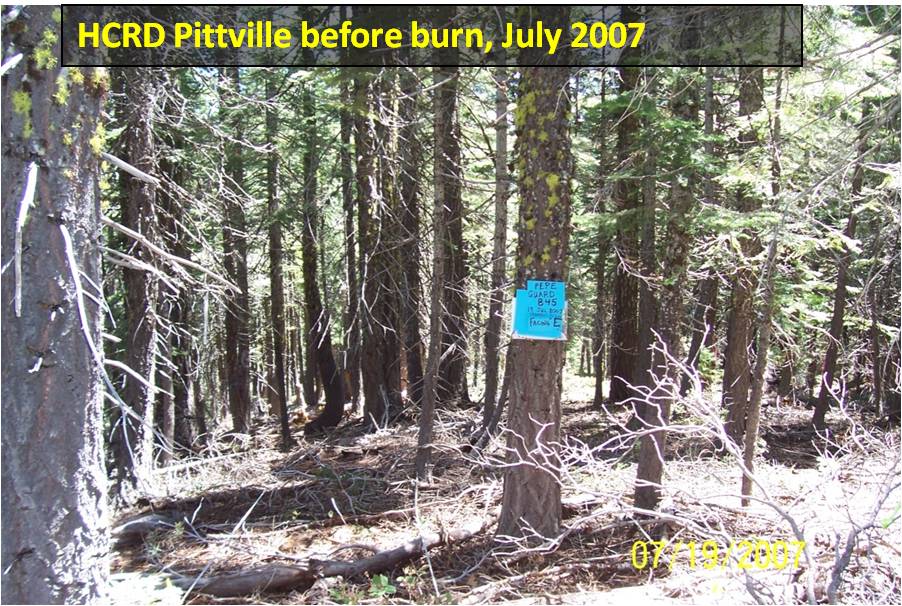
|
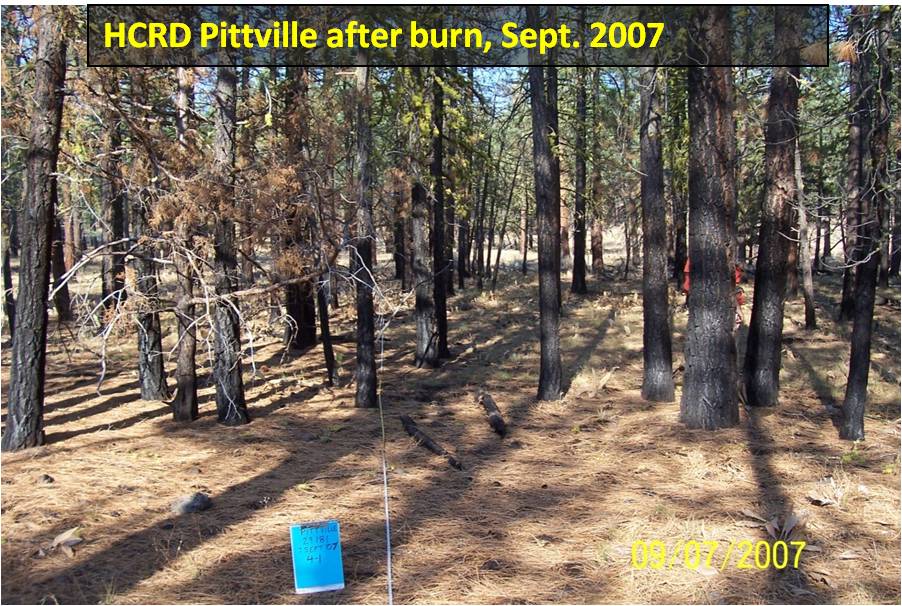
|
|
Before and after prescribed fire treatments. Prescribed fire is used at generally low severity to reduce understory fuels though
some middlestory trees may die as a result but few if any canopy trees are killed. Low severity fires are believed to have been
much more common before the establishment of fire prevention than they are today in the Sierra Nevada.
|
See the following reports and literature for more information on study design, methods, results, and conclusions: